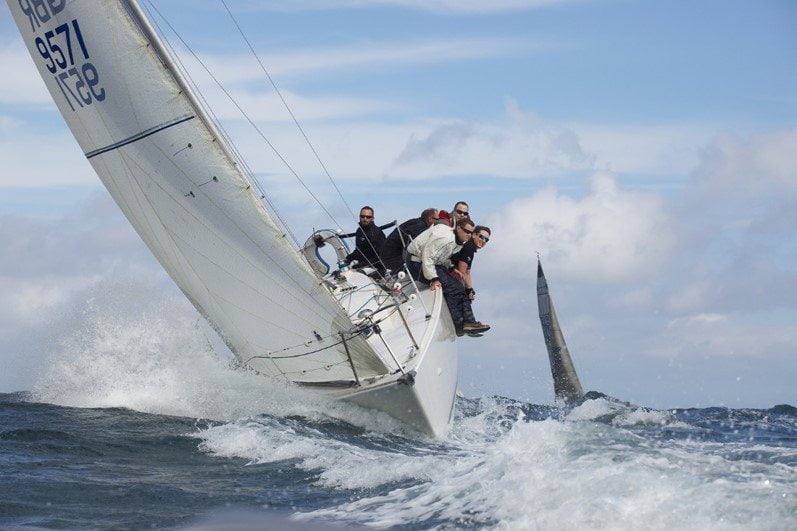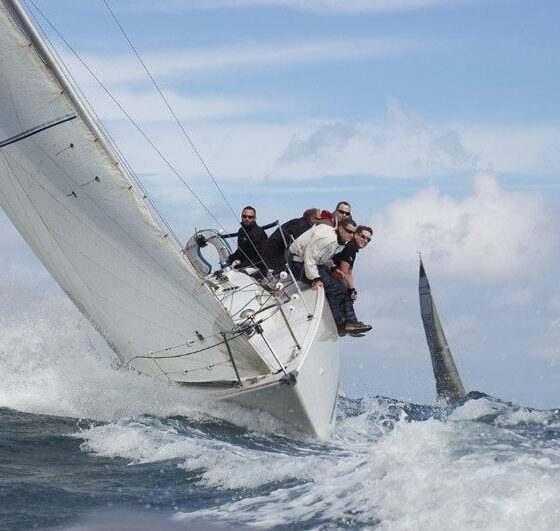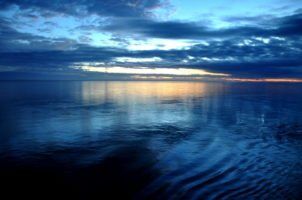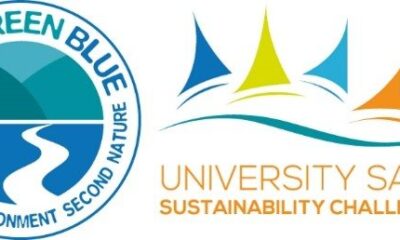

Environment
The Green Blue project – minimising boating’s impact on the environment
The Green Blue is the joint environment programme created by the Royal Yachting Association and British Marine for anyone who enjoys getting out on the water or whose livelihood depends on it. They recently launched the University Sailing Sustainability Challenge and we caught up with The Green Blue’s Kate Fortnam to talk about the project in more detail.
Tell us more about The Green Blue project?
The Green Blue – launched at the Southampton International Boat Show on 19th September 2005 – is an innovative environmental awareness set up to promote the sustainable use of coastal and inland waters by boating and watersports participants, as well as the sustainable operation and development of the recreational boating industry.
The Green Blue’s objective is to help boaters and boating businesses to minimise their impact on the environment by raising awareness amongst industry and users; reducing harmful discharges; reducing environmental disturbance; and encouraging sustainable choices.
Who/what was the driving force behind setting it up?
The Green Blue is the joint environmental initiative of the Royal Yachting Association (RYA) and British Marine. It recently celebrated 10 years of successfully helping boat users, boating businesses, sailing clubs and training centres reduce their impact on coastal and inland waters to keep them in great shape for now and the future.
With support from The Crown Estate’s Marine Stewardship Programme, the small Hamble-based team raises environmental awareness and identifies eco-friendly products to make boating in the UK as sustainable as possible.
How widely is it known and accepted in the UK sailing community?
If you take a look around most sailing clubs and marinas today, it’s clear that the boating sector has really taken to environmental change and the work of The Green Blue. You’ll find LED lighting along pontoons, smart meters, waste management facilities with different receptacles for every type of boat waste, solar panels visible on many marina office roofs and yacht decks, on board wind turbines, hybrid engines, inline bilge filters and even electric car charging points in marina car parks.
But there is still more work to be done to protect the future sustainability of our marine ecosystem. By working towards an environmentally self-regulating boating community, The Green Blue aims to make efficiency savings, avoid red tape, help boaters and boating businesses minimise their impact on the environment, and safeguard the waters and habitats we enjoy and rely on for the future.
One assumes that sailing would be relatively sustainable, it’s wind powered, so what are the key sustainability issues for the sport?
As more and more people take to the water we risk damaging the natural environment. Whether it’s our coastal waters or inland lakes, rivers and canals, our waterways are getting more crowded and with numbers come problems. And it’s not just wind-powered boats that are out there! The Green Blue offers advice to participants of dinghy and yacht racing, motor and sail cruising, RIBs and sportsboats, powerboat racing, windsurfing, inland cruising and personal watercraft (jet-skis).
Nobody wants red tape and regulations so The Green Blue works hard to avoid this by encouraging people to voluntarily change their habits and become more environmentally friendly every time they go boating. Here’s just a snapshot of some of the environmental issues that boaters face:-
Antifoul and Invasive Species: Whilst antifouling does a great job of keeping our hulls clean, and even has some environmental benefits such as improving fuel efficiency and preventing the spread of invasive non-native species, it is toxic to aquatic life. Since the banning of TBT in 1987, most antifouls are now copper or zinc based. Some of the compounds found in these antifouls can accumulate in marine organisms, and can find their way into marine wildlife further up the food chain.
Cleaning and Maintenance: When boats are cleaned, the cleaning products can end up in the water. Products used on boat hulls and decks often contain chlorine, ammonia, potassium hydroxide and solvents, all potentially harmful to the aquatic environment. Detergents containing phosphates (such as washing-up liquids and laundry detergents) can lead to nutrient enrichment causing algal blooms and oxygen depletion, causing localised suffocation of aquatic life.
Oil and Fuel: The fuel and oil used by recreational craft is lighter than crude oil and although these lighter fuels do not have the catastrophic effect of smothering marine life, they are toxic to fish and many other water species. Prolonged exposure can affect reproduction, growth and feeding, even in low concentrations. These toxins can build up in the food chain and eventually find their way into us.
Sewage and Waste: Untreated sewage from boats can spread gastroenteritis; contaminate shell fish beds and mussel ropes and use up vital oxygen in the water. Human waste also contains phosphorous and nitrogen which increase the levels of algae and reduce water clarity. Chemicals such as chlorine, formaldehyde, ammonium and zinc compounds used as disinfectants, breakdown and deodorise waste are toxic to marine life.
Wildlife: Examples of possible disturbance is engine noise interfering with the acoustic communications of whales and dolphins, affecting the way they hunt for prey. Speeding vessels can affect the reproductive cycles of fish and excess wash can cause bank erosion and the loss of habitats
What was the thinking behind creating a university challenge?
At the British Association for Sustainable Sport conference in 2014, The Green Blue had an opportunity to meet with Nick Roberts and learn about the Global Athletes programme which encourages students to embrace sustainability challenges in their everyday lives at university.
The Green Blue saw this as a great model to extend to university sailing clubs by challenging students to improve environmental sustainability within their sailing teams and clubs. Students love a challenge, so The Green Blue created a three tiered competition with a prize draw incentive and invited university clubs to sign up. The response has been brilliant and The Green Blue is very excited to have such an energetic and committed group of students on board helping to promote sustainable boating.
How many university sailing clubs are there?
There are 46 university sailing clubs.
What do you need to happen for the challenge to be a success (how can readers help)?
Lots of encouragement! Follow the teams on Facebook and Twitter (@thegreenblue) and if you are a member of a sailing club that hosts a university sailing team, look out for them and support what they are trying to put in place at the club.
Readers can also meet the team and find out more about The Green Blue’s incredible journey at www.thegreenblue.org.uk or to find out more about sustainable boating call 023 8060 4273.


 Environment10 months ago
Environment10 months agoAre Polymer Banknotes: an Eco-Friendly Trend or a Groundswell?

 Environment12 months ago
Environment12 months agoEco-Friendly Home Improvements: Top 7 Upgrades for 2025

 Features9 months ago
Features9 months agoEco-Friendly Cryptocurrencies: Sustainable Investment Choices

 Features10 months ago
Features10 months agoEco-Friendly Crypto Traders Must Find the Right Exchange





















